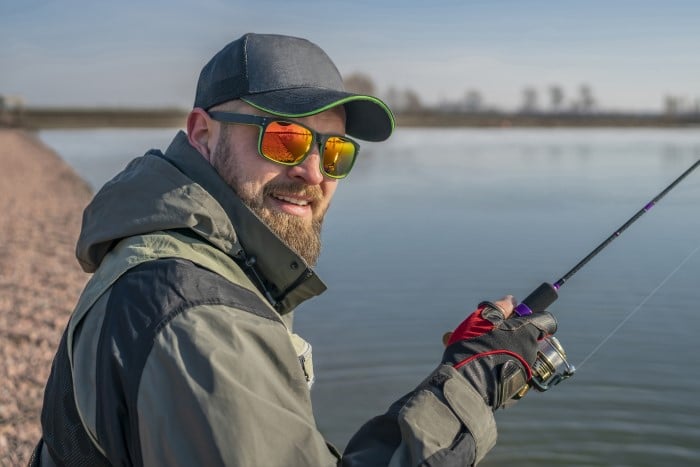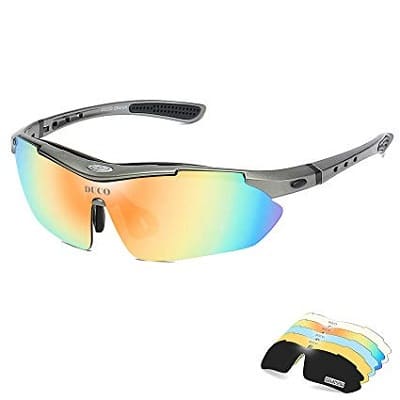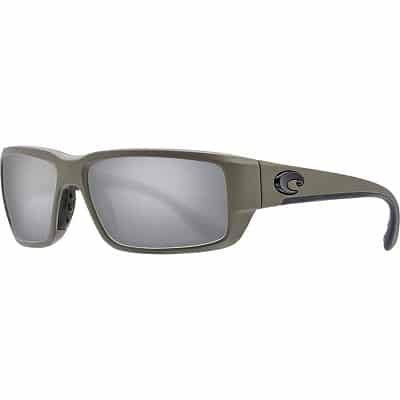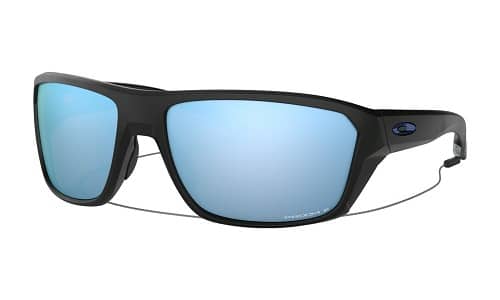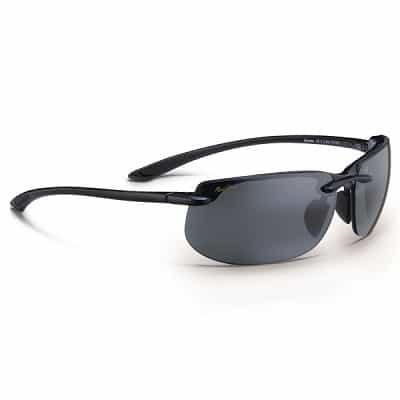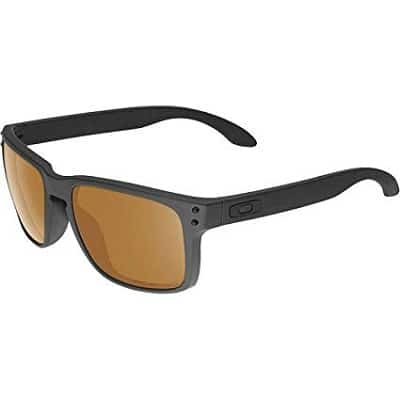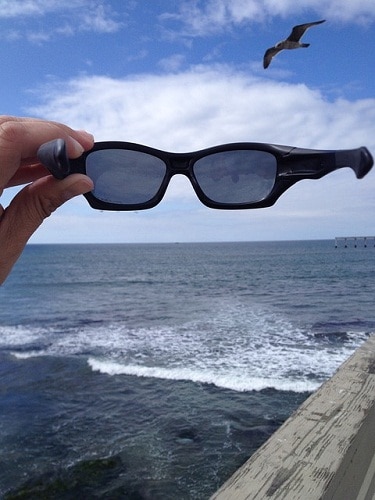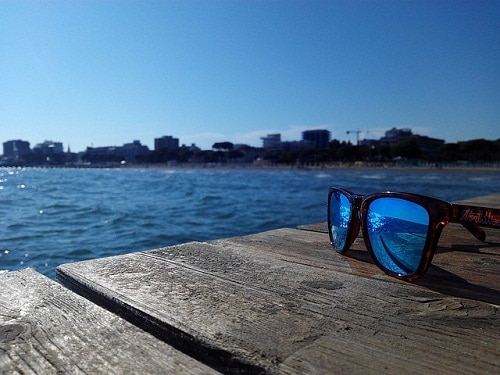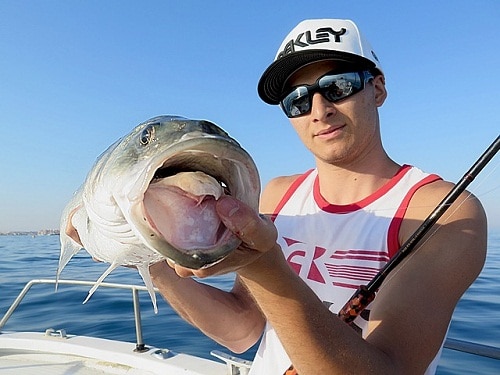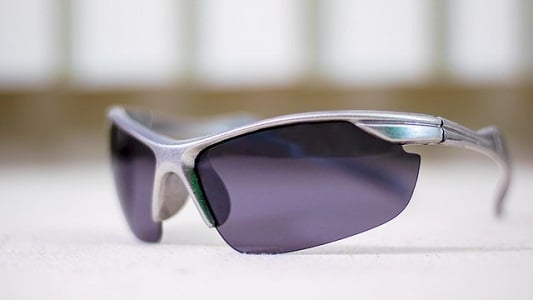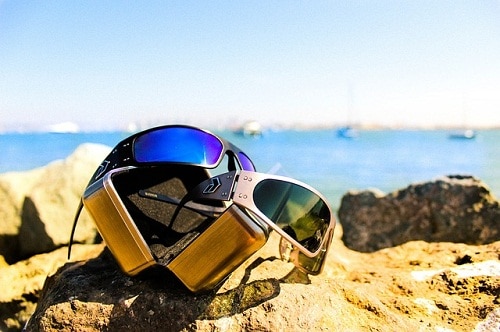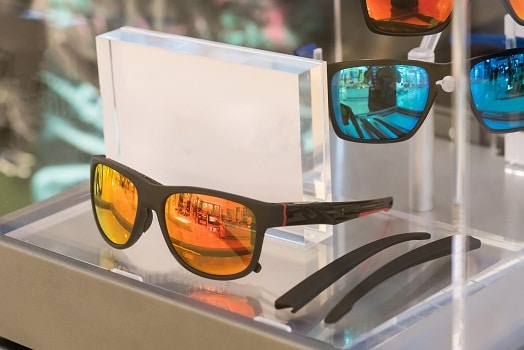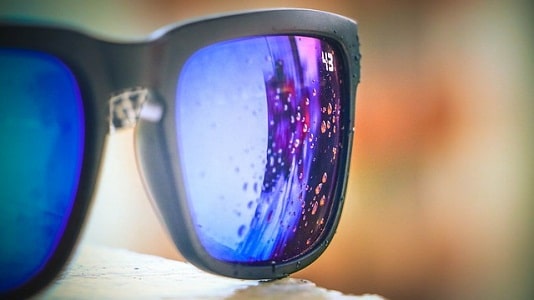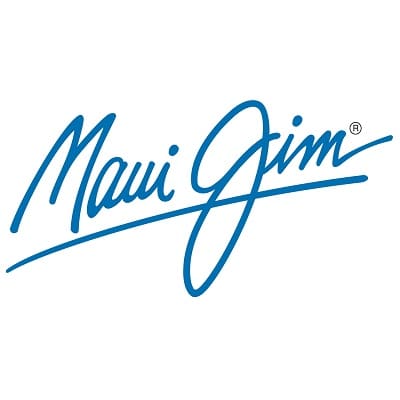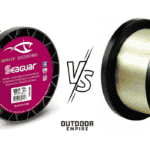Having a pair of polarized sunglasses can make your days on the water safer, more comfortable, and even increase productivity. Of course, you will want to spend your money on the best lenses available, regardless of how much you wish to spend. Let us help you by reviewing the best of the best at several different price levels.
We’ll also provide some recommendations on what to look for when shopping and considering the top manufacturers.
It is rare that you see a serious angler without their favorite pair of sunglasses close at hand. While everyone will have a favorite pair that they never leave the dock without, you can be sure that each and every pair share one feature—they are polarized.
Polarized fishing sunglasses do more than protect your eye against the sun’s glare and harmful UV rays. They also improve you vision. Colors are clearer, and fish are easier to spot, even when in the water.
Whether you are shopping for a forever pair, the ones that will last for many seasons to come, or a cheaper pair to get you through this season, you will still want to make sure you are getting what you need.
Comfort, style, and performance are expected, no matter the cost. With that in mind, we have scoured our sources and identified the best of the best, even at the lower end of the price range.
The 8 Best Polarized Fishing Sunglasses In 2020: Outdoor Empire Reviews
- Best Under $50 #1: DUCO Polarized Sports Sunglasses
- Best Under $50 #2: Flying Fisherman Buchanan
- Best for the Money #1: Smith Optics Guides Choice
- Best for the Money #2: Costa Del Mar Fantail
- Best Overall #1: Costa Tuna Alley
- Best Overall #2: Oakley Split Shot
- Best for Fly Fishing: Maui Jim Banyans
- Best for Sight Fishing: Oakley Holbrook Pros
| Category | Best cheap | Best for the money | Best overall |
|---|---|---|---|
| Product | 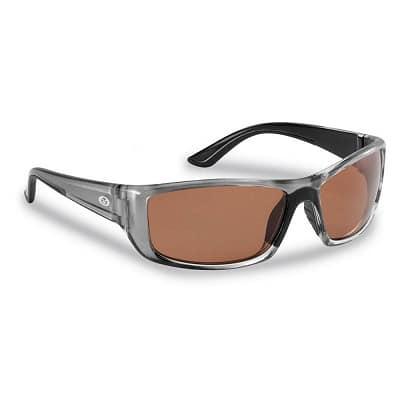 | 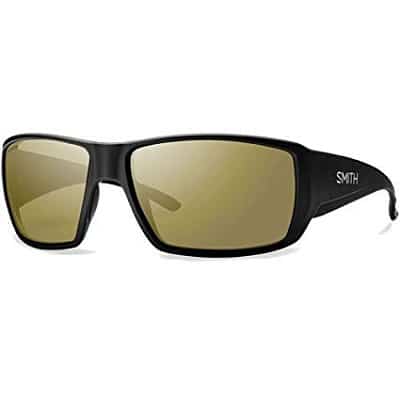 | 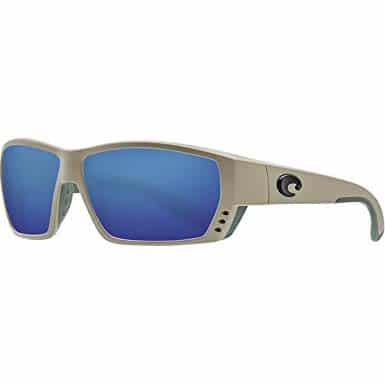 |
| Fit | Medium | Medium to large | Large |
| Frame Specs | 62 lens width x 12 nose width x 120 Temple length | 62 lens width x 16 nose width x 120 Temple length | 61.8 lens width x 13 nose width x 114.8 Temple length |
| Weight | 1.2 oz | 1.6 oz | 1.28 oz |
| Available Lens Colors | - yellow-amber - smoke - copper - amber | - bronze - brown - blue | - green - gray - blue - copper |
| Warranty | 1 year | Lifetime | Limited lifetime |
| Cost | Check Price | Check Price | Check Price |
1. Best Cheap Polarized Sunglasses Under $50
Unfortunately, far too many anglers opt to buy non-polarized lenses. Their reasons may vary, but they often include concerns about price.
While it is true that polarized fishing sunglasses can be more expensive than regular sunglasses, that does not need to be the case. The following models may not cost as much as others ,but that does not mean you shouldn’t consider them when shopping for your next pair.
DUCO Polarized Sports Sunglasses with Interchangeable Lenses
Maybe you are in need of polarized sunglasses for your next fishing trip but do not want to break the bank doing so. Maybe you are always losing your sunglasses or need a spare pair for the boat, so spending a lot of money just doesn’t make sense.
No matter the reason, DUCO is here with a pair of well-made, lightweight, polarized fishing sunglasses that will deliver quality at a low price.
These polarized sunglasses have a lightweight design that’s perfect for a long day on the water. The low profile and close-to-the-face design provides increased coverage and visibility without being so bulky as to prohibit long term use.
Plus, you get the advantage of three different lenses—standard gray, yellow for low light, and Revo Blue for offshore. All three lens colors provide 100% UV400 protection and block UVA and UVB rays.
PROS
- Lightweight, making all day wear more comfortable
- Flexible plastic frames that will withstand hot and cold temperatures as well as the occasional accidental mistreatment
- Includes three different lens colors to meet all your fishing needs
- 30-day money-back guarantee and lifetime-breakage warranty
CONS
- One size only tends to be on the smaller side and a tight fit for larger facial profiles
- Does not include a carry case or cleaning cloth
Flying Fisherman Buchanan
The Buchanan polarized fishing sunglasses may not be the most expensive option available, but that does not mean that you will be settling when you select these as you main fishing sunglasses.
Flying Fisherman’s goal is to provide quality, stylish sunglasses that you’ll be proud to wear at a fraction of the cost you would spend on competitors’ models.
The polycarbonate frames are lightweight, comfortable and durable. The lenses rely on triacetate technology to provide increased visibility in a variety of conditions.
These lenses also protect against 100% of UVA and UVB rays, eliminate glare, and are resistant to scratching. The polycarbonate frames are lightweight, durable, and comfortable enough to wear all day.
PROS
- Style and function at a fraction of the cost you pay for others
- Five frame and lens combinations to choose from
- Designed by anglers for anglers, field tested under real world conditions
CONS
- Does not include carry case or cleaning cloth
- Lenses are not interchangeable
2. Best Polarized Sunglasses For The Money
For some anglers, money is less of a concern than quality, but that does not mean they are willing to spend more than necessary. The following polarized sunglasses are sure to provide the best value without sacrificing features.
Smith Optics Guides Choice
The main reason you wear sunglasses is to protect your eyes. The reason you wear polarized lenses when fishing it to increase visibility. Rarely do you find a pair of sunglasses the allow you to achieve both without compromise. That is, until Smith brought you the Guides Choice.
Fishing guides rely on their sunglasses to provide the top-level visibility that both they and their clients need to find the fish. The ChromaPop polarized lenses boost color, increase contrast, and cut glare resulting in superior vision and protection.
No more eye fatigue, UV damage, or that feeling that you have been staring into bright light all day.
The snug fit and wraparound frames protect from side glare, and the Megol nose and temple pads, premium spring hinges, and detachable leash assure that your glasses will stay in place all day and won’t be lost should you need to drape them around your neck for a minute.
Related: Best Smith Polarized Fishing Sunglasses Reviewed
PROS
- High-quality materials and construction built for long time use
- Visibility and clarity that is hard to beat
- Includes leash, hard carry case, and cleaning cloth
CONS
- Style is great for fishing but may not be suitable for other activities, such as driving, since these glasses limit side vision
- Price is high (this is an investment intended for long-term use)
Costa Del Mar Fantail
One of the complaints customers have with many Costa models is the oversized frame—they are great at providing protection but not a good fit for anyone without a large face. The Fantail is the answer to that complaint and then some.
The lightweight frames are slightly smaller than other models, providing a better all-around fit. Also, because they are flexible enough to wear over a cap, they can still be worn by people with larger heads.
Like all Costa models, the Fantail is available with their groundbreaking, high-end 580G lens technology, which ensures superior visibility and clarity. Those wishing to save some money can also opt for 400 or 400P polycarbonate options, both of which still offer all-day comfort and protection.
The co-molded arms include non-slip bottoms, resulting in increased comfort without the need for an overly tight fit. Of course, they are also offered in a wide range of color combinations to meet your personal needs and style.
PROS
- Fits a wide range of customers well
- Costa 580G lenses available
- Frame and arm design allow for a better fit without being overly tight
- Frame flexibility means placing them on top of your head, even when wearing a hat, will not stretch the glasses
- Includes a hard carry case, cleaning cloth, and lifetime warranty
CONS
- Does not include air vents found on many of Costa’s other models
- Numerous color combinations can make it difficult to select the best look for your specific situation
3. Best Overall Polarized Sunglasses For Fishing
If you could buy the best polarized sunglasses, regardless of the price, what would they be? Most serious anglers have asked themselves this question at least once. Should you find your bank account flush, here are some of the sunglasses that should be at the top of your list.
Costa Tuna Alley Polarized Fishing Sunglasses
Costa is one of the leading producers of polarized fishing sunglasses. No, they did not make fishing shoes or shirts and then get into the fishing sunglass industry—this is where they started.
The Tuna Alley is one of their latest offerings and one of their finest, certainly an option to consider if you plan on investing on a quality pair of fishing sunglasses.
Built from the ground up to meet an angler’s needs, the Tuna Alley starts with heavy duty TR-90 nylon frames for lightweight durability in a wide range of temperatures. Integral hinges ensure a tight fit for added comfort and protection against loss.
A patented ventilation system helps prevent the lenses from fogging. The lenses themselves are Costa’s own patented 580G style, which refers to the light spectrum they are designed to block.
Although the lenses block 100% UV rays and are scratch and impact resistant, this added light resistance is what allows them to provide superior clarity.
PROS
- Designed specifically for anglers, tested under real world conditions
- High-quality material and construction make these sunglasses ones you will wear for many seasons to come
- Superior clarity, impact resistance, and 100% UV blocking
- Prescription-ready
CONS
- Those with a smaller face will find it harder to get a good fit
- There are so many lens / frame combinations available, it can actually be difficult to select the right one.
Oakley Split Shot Polarized Fishing Sunglasses
Oakley has long been a leader in providing quality sunglasses, but the Split Shot is their first design built specifically for those who spend their time on the water. When designing these glasses, they looked at what worked best and what anglers needed and then combined the two.
The result is one of the best polarized sunglasses for fishing available today.
Oakley started with lightweight, highly durable materials such as O Matter frames and Unobtanium nose bridge for their famous three-point fit and day-long comfort. Next, they added PRIZM lens technology for increased visibility and protection from harmful UV rays.
Then they added a low-profile shape that is hat compatible, a must for anglers who do not want their glasses knocked off over and over again. Finally, Oakley engineered a custom leash system and 20-inch steel cable for security when you need to remove the frames from your face.
PROS
- First Oakleys specifically designed for anglers
- Superior fit, comfort, and security
- PRIZM lenses provide high-level clarity and contrast in a variety of conditions
CONS
- As a new design, there are not long-term reviews by real users available yet
- Lenses for deep water and shallow water are not easily changes
4. Best Fishing Glasses for Fly Fishing
Fly fishing enthusiasts depend on a lot of specialized equipment, and their sunglasses are no different. While your buddies who fish the local piers may have some great sunglasses, they just don’t seem to meet you needs. Here is the pair that we consider the best for casting a fly.
Maui Jim Banyans
Fly fishermen want the same protection and clarity that any angler seeks, but they also need something else—better visibility in low light. Every fly angler knows that the best fishing tends to occur during dusk and dawn, those times when light is low and visibility is worse, but the chances of catching a trophy are greatest.
Maui Jim uses High-Transmission (HT) lenses, designed to improve passage of light frequencies associated with contrast while still blocking those which are damaging. This will help you not only during prime fishing hours but also when fishing in heavily shaded areas or on overcast days.
While the HT lens is available in a wide range of Maui Jim models, the Banyan incorporates a World Cup frame with a wider, wraparound style that provides additional side protection.
PROS
- Higher degree of visibility and clarity in low-light conditions
- Stylish, modern design is equally at home on the boat, beach, or out on the town
- Very lightweight for increased comfort during day long wear
- Replacement lenses and parts readily available
CONS
- Thin frame style is not as durable as other models
- Shape will not fit as many face types as some others, especially with the wraparound lens design
5. Best Polarized Sunglasses for Sight Fishing
Sight fishing is all about vision. After all, it is nearly impossible to cast to a fish if you can not see that fish clearly. With that in mind, having the right pair of polarized fishing sunglasses available takes on a higher level of importance, right up there with having the right rod and reel.
Oakley Holbrook Pros
Oakley has made the list before, so it should come as no surprise that they are being mentioned again. The Holbrook Pros are unlike many of the other Oakleys that anglers consider. First, there is the style. These are more boardwalk than fishing pier with a mix of color and style unlike most other fishing sunglasses.
Then there is the price. Although they are not cheap, with average prices around $149, they are not in the $200–$300 range of many competitors. But that is not what makes them the best for sight fishing.
The Holbrook Pros utilize plastic frames for a lightweight, non-corrosive design that will stand up to salt spray and exposure to high temperatures.
The Plutonite lens material filters 100% of UV rays and protects against impact while still providing superior contrast. This contrast allows the wear to clearly and accurately pick out far-off targets without distortion. You can aim where the fish is, not where your glasses think the fish is.
PROS
- Great value without compromise in quality
- Wide range of frame/lens color combinations available
- Very stylish design suitable for both fishing and a night on the town
CONS
- Do not include nose or ear pads, which may result in unwanted slipping when sweating
Here’s a review on another alternative, the Gatorz Marauder!
What are Polarized Sunglasses?
Polarized lenses work by realigning or blocking incoming light waves, making some less visible while increasing the contrast of others. This was at one time accomplished by including vertical stripes within the lens, which acted similarly to a venetian blind.
Modern polarization is accomplished through a combination of lens materials, filters, and color selection, which makes the lenses not only more comfortable to wear but also more affordable.
The difference between polarized lenses and normal sunglasses is readily apparent to anyone who wears them, especially in an outdoor setting.
Normal lenses block light waves equally, resulting in everything being darker. Polarized lenses, as mentioned earlier, will block specific light waves and amplify others. This result is improved vision.
Yes, the sun’s bright glare and harmful rays are still blocked, and you get the advantage of wearing sunglasses, but the amplification of desired light waves means your vision will better than when wearing normal sunglasses, often better than when not wearing any sunglasses at all.
Why Should You Choose Polarized Fishing Sunglasses?
As stated before, the main function of polarized sunglasses is the improved clarity they provide. This is the main reason that they were first popular with drivers and those involved in outdoor sports, such as boating, fishing, and skiing. Only a few decades ago it would cost you a tidy sum to go with polarized lenses.
Today they are pretty much the norm, and it is hard to find a pair of quality sunglasses, regardless of the target audience, that does not come with polarization. However, they still cost more than normal lenses, so why should you spend the extra money?
For the angler, clarity is a key to successful fishing, especially if sight casting, as you need to see the fish if you are to accurately aim your lure. A key way polarized lenses improve clarity is by reducing glare, especially glare reflected off the water.
The rays reflected off the water can be dangerous and even blinding, so this is a vital protection you will want. The reduction of glare also allows you to see below the water’s surface, so you’ll not only see the fish and their habitat but also obstacles and snags that may present a danger to you or your boat.
Many sunglass manufacturers now offer specially engineering polarization that enhances specific colors needed for specific activities.
For example, fishing sunglasses will improve the ability to see reds, yellows, and similar colors often associated with the small but important features needed to identify fish species and the lures you will use to target them.
Finally, there is the matter of eye fatigue and long-term eye health. Although polarization does not provide any additional UV protection, it does reduce the fatigue eyes experience to when exposed to bright sunlight. This in turn allows an angler to spend longer periods of time outdoors.
Over time, unprotected exposure to the sun can damage the eyes by burning the retinas or causing damage to the interior of the eye. Lenses with polarization and UV protection can help prevent this.
How to Make Your Selection
Selecting the perfect pair of polarized fishing sunglasses is a balancing act. You need to consider which of the features are most important, which you can do without, and how much you are able (or willing) to spend.
Lens Material
Manufacturers are always experimenting with new, innovative materials that are lighter, stronger, or more economical, but most lenses are constructed from one of four materials.
Glass
This is an extremely popular material for polarized lenses and offers crisper vision with almost zero distortion, high resistance to scratching, and the ability to accept prescriptions. However, glass lenses cost more than many other options, weigh more and are the less resistant to breakage.
Polyurethane
It is hard to beat polyurethane when it comes to manufacturing quality lenses. It provides superior clarity while also being impact resistant and flexible, which results in less danger should lenses pop out during physical activity.
Unfortunately, the production cost is higher than other options, so it is generally only found in higher-end models. Like other composite materials, it is also more susceptible to scratches.
Polycarbonate
This is one of the most popular lens materials in the market. These lenses are extremely durable, especially against impact damage, and they weigh far less than glass and thus more comfortable for long-term wear. The cost is also less than glass or polyurethane.
The downside is these lenses are more easily damaged by scratches, and clarity is not as good.
Acrylic
These are the lowest-quality lenses and suffer from almost all the combined disadvantages encountered with the other materials. Apart from weight, they are comparable to polycarbonate. They are suitable for occasional use or if the buyer is looking for a backup pair, something they can throw in the tackle box just in case.
Frames
Although polarized lenses are available in a wide range of frames, including rimless frames, the most common among anglers is the 8 Base frame. This style is recognizable for being thick and wrapping around the temples.
It’s popular because this enclosed style offers additional protection from harmful glare and rays. It also tends to provide a more stable construction that can withstand a bit more abuse.
As far as frame materials go, the most popular remain metal, acetate, and nylon.
Metal
Like glass lenses, metal frames were once the only frame option available, but they are no longer considered the best option for anglers. Any type of metal is more prone to corrosion and deterioration associated with exposure to water, salt, sand, and other contaminates commonly encountered while fishing.
Metal is also heavier than the other options available.
Acetate
Although this material is lighter and affected less by corrosion than metal, it is highly susceptible to changes in temperature, both hot and cold, which can result in deformation.
Nylon
As with polycarbonate lenses, nylon frames are the industry standard. Nylon tends to be the most forgiving when exposed to a wide range of temperatures, weighs less, and is the most resistant to breakage or stretching.
Lens Colors
Greys/Greens
Dark colors cut through glare and work well at reducing eye strain during medium- to heavy-light conditions. They’re not as good during reduced visibility, such as at dusk or dawn, as they will be difficult to see through.
Browns
This color works similarly to greys and greens, however, they tend to distort some colors. Because this distortion is minor, it generally does not interfere with wear. Copper tends to provide greater contrast than greys or greens and allows for better depth perception.
Yellow/Amber
Generally better for low-light conditions, including nighttime driving, yellow gathers light and improves brightness but does not improve contrast by itself.
Rose
If you need to perform in low-light conditions and need contrast, the best option is rose. It has similar performance to yellow, with the added benefit of improving contrast as well.
Visible Light Transmission
One feature that few buyers consider, but which greatly impacts function when fishing, is the visible light transmission, or VLT, rating. This is a measurement, indicated as a percentage, of how much light a specific lens allows to reach the wear’s eyes
The following describes the best use for VTS ratings:
-
- 0–19% Bright, sunny conditions / open water
- 20–40% All-purpose use, not best for sunny conditions, but better than not wearing sunglasses at all
- 40%+ Low-light, overcast conditions
- 80–90% Best as safety or shooting glasses rather than sunglasses
Coatings
Finally, we come to the issue of lens coatings. These may be standard on a particular model or available as an option. Not all available coatings are beneficial on polarized lenses or when engaged in fishing activities, but there are three you may want to consider.
Hydrophobic – Assists in repelling water and can assist in maintaining vision when operating a watercraft.
Anti-scratch – Will help protect lenses from unwanted damage
Anti-fog – Will help prevent lens fogging due to changes in temperature or during heavy physical activity.
Top Polarized Sunglasses Brands
Costa Del Mar
This company was born with saltwater running through its veins. Owner Ray Ferguson started the company in 1983 Daytona Beach by providing specialty sunglasses to NOAA, and by 1986 he had supplied sunglasses to the America’s Cup Challenge.
Thanks to these high-profile successes, and unofficial sponsorship by area surfers, Costa Del Mar soon became a household name among those who spend their lives on the water.
Today, they are without a doubt a top name in polarized sunglasses, especially those targeting anglers. Their TR-90 frames and 580G lenses are some of the most revolutionary on the market and provide some of the best protection, clarity, and color contrast available.
Smith Action Optics

He just wanted to spend more time on the slopes. The result was a revolutionary sealed thermal lens and vented foam goggle that would soon be on the head of every up-and-coming skier.
That was 1965, and today Smith Optics has taken that same time-tested need to solve a problem with them when designing polarized sunglasses for anglers. They go beyond polarization by adding ChromoPop, Techlite, and Polarchromic to their already popular line, resulting in reduced glare and some of the clearest lenses available.
Oakley

However, despite the wide range of unrelated products (something that Oakley still faces), these first sunglasses were a huge success and paved the way for Oakley to be a widely respect eyewear producer today.
Although widely used by anglers, the majority of Oakley brand eyeglasses are not specifically designed with the angler or even water-borne sportsman in mind. Oakley’s major following is among professional and collegiate athletes in a variety of sports, first responders, and the military.
They are one of the few eyeglass brands accepted for wear by US Army personnel when in uniform and are standard issue within some units. With the introduction of the Split Shot, Oakley officially entered the angler eyewear field.
Maui Jim
Like Costa Del Mar, this company was born on the water, although it was the opposite coast and a different ocean. Although it has been bought, sold, and moved numerous times over the years, MauI Jim’s roots can be traced to the 1980 beaches of Maui, Hawaii.
The sunglasses sold on that beach were so popular because they provided clear visibility and the protection needed in the hot tropical sun. By 1991, Maui Jim was offering polarized lens, and the rest is history.
Today, Maui Jim is headquartered in Peoria, Illinois, but that does not affect their ability to provide top-of-the-line sunglasses for those who enjoy time on the water. As of 2016, they offered over 125 styles, and in 2018 they added prescription lenses to their already successful line
Frequently Asked Questions
1. Are there any polarized prescription sunglasses available?
Yes, polarization is available in prescription lenses, both as sunglasses and non-sunglass forms.
Although many of the higher end polarized sunglasses are prescription ready, this does not mean the stock lens can have a prescription added. Instead, you will need to have an insert added behind the stock lens or have it swapped by your eye doctor.
2. How important is it to wear sunglasses when fishing?
It is important to wear sunglasses any time you are outdoors as they protect you from dangerous sun glare and UV rays. They also improve your ability to see. When you are fishing, the need for sunglasses is amplified due to the long periods you will spend outdoors and the added reflection of sunlight off the water.
Plus, fishing requires you to accurately and clearly see fish and their location if you are to cast correctly.

